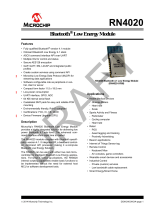
limits or band edge limits (e.g.,where a different antenna may be causing
additional emissions).
b)The testing should check for emissions that may occur due to the intermixing
of emissions with the other transmitters, digital circuitry, or due to physical
properties of the host product (enclosure). This investigation is especially
important when integrating multiple modular transmitters where the certification
is based on testing each of them in a stand-alone configuration. It is important
to note that host product manufacturers should not assume that because the
modular transmitter is certified that they do not have any responsibility for final
product compliance.
C)If the investigation indicates a compliance concern the host product
manufacturer is obligated to mitigate the issue. Host products using a modular
transmitter are subject to all the applicable individual technical rules as well as
to the general conditions of operation in Sections 15.5, 15.15, and 15.29 to
not cause interference. The operator of the host product will be obligated to stop
operating the device until the interference has been corrected
The module is based on 10.525G-A chip .support standard SRD commands.
For the testing module on your product, user can refer to specification of the
SRD system on how to configure and evaluate the module.This specification
can also be found on the official SRD website
2.10 Additional testing,,Part 15 subpart B disclaimer
The final host / module combination need to be evaluated against the FCC Part
15B criteria for unintentional radiators in order to be properly authorized
for operation as a Part 15 digital device .
The host integrator installing this module into their product must ensure that the
final composite product complies with the FCC requirements by a technical
assessment or evaluation to the FCC rules, including the transmitter
operation and should refer to guidance in KDB 996369.
Frequency spectrum to be investigated
For host products with certified modular transmitter,the frequency range of
investigation of the composite system is specified by rule in Sections 15.33(a)
(1) through (a)(3),or the range applicable to the digital device, as shown in
Section 15.33(b)(1),whichever is the higher frequency range of investigation.
Operating the host product
When testing the host product,all the transmitters must be operating.The
transmitters can be enabled by using publicly-available drivers and turned on,
so the transmitters are active. In certain conditions it might be appropriate to
use a technology-specific call box (test set) where accessory devices or drivers
are not available.







